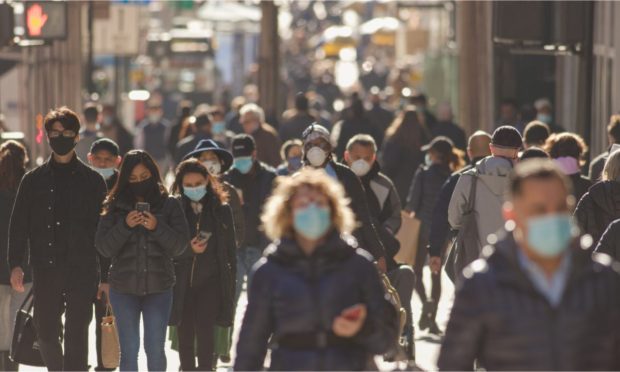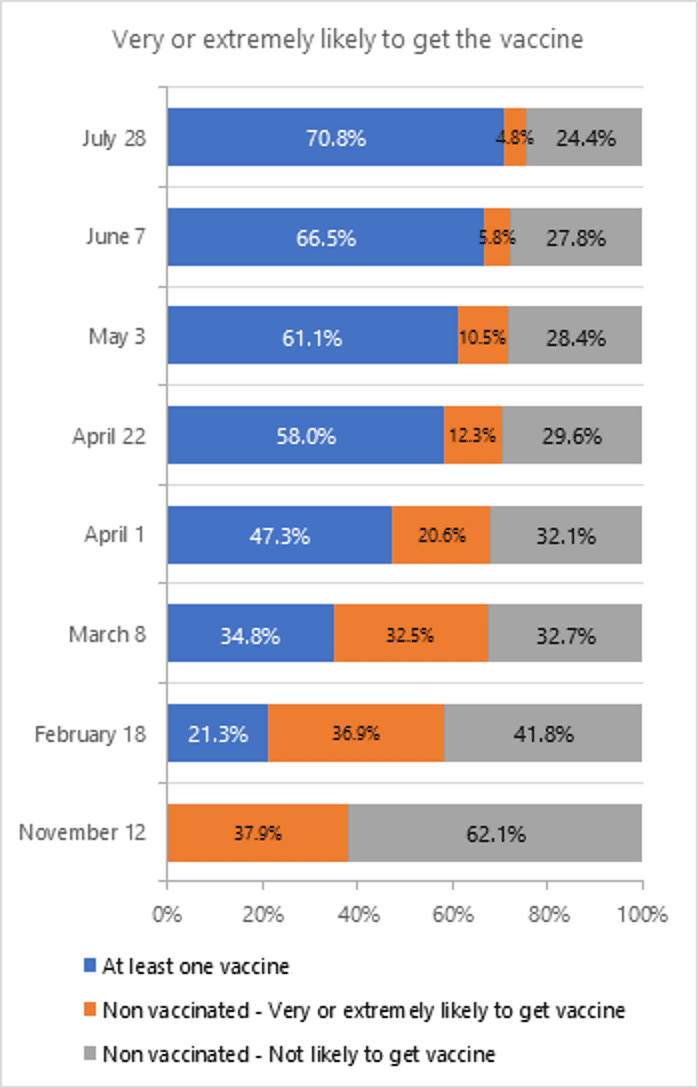Pandemic Will Linger Into 2022, Say Consumers, Before We’re ‘Back to Normal’

“If it be not now, yet it will come — the readiness is all,” wrote the Bard. And when it comes to the pandemic, the seemingly interminable waves of infections and variants, it seems like the only certainty we have is … waiting.
Against that backdrop, PYMNTS’ surveys of hundreds of consumers through the past several months show the assumed timeframes of when the pandemic will end — and by extension, when life will return to “normal” — keep shifting.
In the spring of 2020 — back in March, to be exact — individuals expected the pandemic to peter out by summer of that year. Fast forward to the latest readings and we find the anticipated “end” date stretches well into the winter as 2021 ends, and into the early months of 2022.
One thing the data (and the chart below) show is the wisdom of crowds. Yes, the availability and the uptake of vaccines have led to — depending on where you look — re-opening of restaurants, schools and all manner of other venues. But then again, there have been mask mandates, scattered school closings, concert cancellations … and so, you get the picture. There’s the readiness to get back to real, in-person, truly omnichannel life … and then there’s the “all clear” that signals it’s OK to act on that readiness.
Less Worried?
The expectations of an elongated “waiting period” comes as what might be termed the “degree” of our concerns about COVID-19 have lessened a bit. The percentage of consumers we’ve surveyed who state they are “very” or “extremely” concerned about the pandemic, as measured at the end of July, stood at 29 percent, which is its historical low, and down markedly from more than 70 percent as of a year ago.

But there are also some signs that even the intention of getting the vaccine is waning a bit — at least among those who have yet to get a shot from Pfizer, Moderna or JNJ. Call it the great divide: More than 70 percent of people who have at least one dose intend to continue. But a smaller percentage of those who have not been vaccinated at all, at 4.8 percent, state they are inclined to get one (and that’s down from 5.8 percent in the previous survey). About a quarter of respondents are unvaccinated and state they are not likely to get one.

The longer the “all clear” gets pushed out, the more firmly entrenched the great digital shift becomes. In separate and recent PYMNTS research, we found that as many as 91 percent of consumers have made a purchase from Amazon in the past year; more than half of consumers surveyed have said that they made purchases using delivery aggregators.
See also: 52 Pct Of Consumers Made Retail Purchases Using Aggregators In 2020
